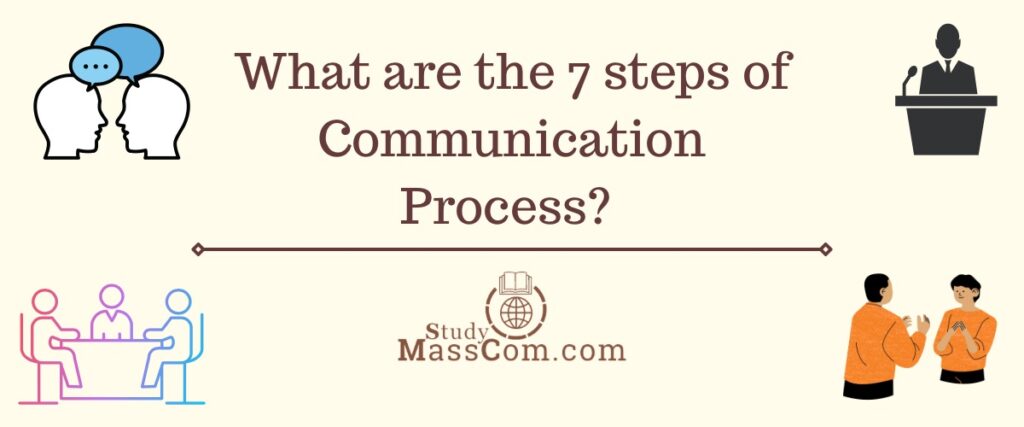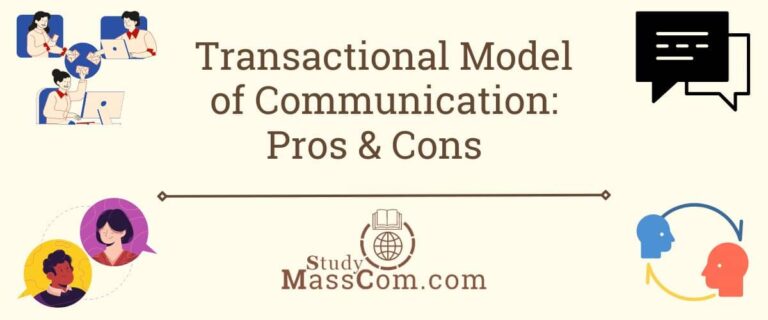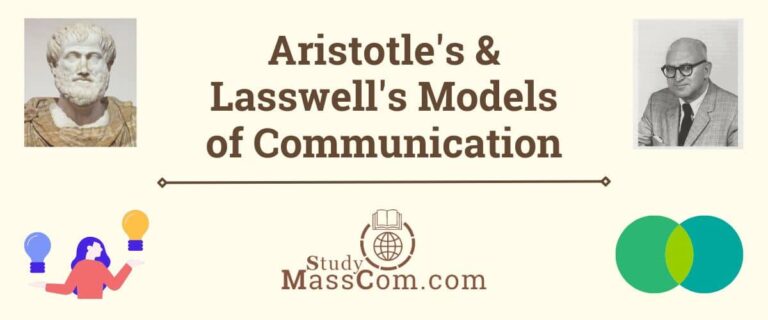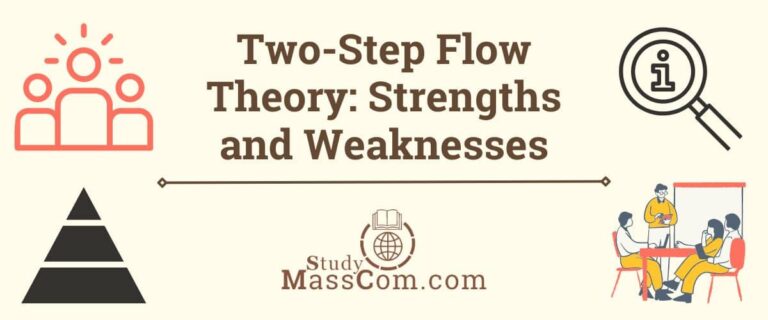7 Steps of Communication Process
Introduction
Communication is an essential aspect of human interaction, enabling the exchange of information, ideas, and emotions. It plays a pivotal role in our personal lives, as well as in the larger scope of mass communication. In this article, we will explore the communication process, highlighting its key components and providing real-life examples to illustrate its significance.

Understanding the Communication Process
One can define communication as the process of transmitting and receiving information, ideas, or messages between individuals or groups. The process of communication consists of several interconnected elements that work together to ensure effective and meaningful exchange. These elements include:

#1 Sender
The sender initiates the communication process by encoding a message, which can be in the form of spoken words, written text, non-verbal cues, or any other medium. The sender’s goal is to convey information or share an idea with the receiver.
#2 Encoding
Encoding involves transforming the message into a format suitable for transmission through the chosen channel. This process may involve converting thoughts into words, selecting appropriate visuals, or employing other means of expression. Effective encoding ensures that the intended message is accurately conveyed.
#3 Message
The message is the actual content being communicated. It can range from a simple sentence to a complex multimedia presentation. The sender must carefully craft the message to ensure clarity and coherence, taking into account the receiver’s perspective and the intended outcome.
#4 Channel
The channel refers to the medium through which the message is transmitted. It can be face-to-face conversations, phone calls, emails, social media platforms, television, radio, newspapers, or any other communication tool. The choice of the channel depends on various factors, such as the nature of the message, the target audience, and the desired reach.
#5 Receiver
The receiver is the individual or group for whom the message is intended. They play a crucial role in the communication process as they interpret and respond to the message. The receiver’s comprehension and response can provide valuable feedback to the sender, enabling them to refine future communication.
#6 Decoding
Decoding is the reverse process of encoding, wherein the receiver interprets and understands the message. The receiver decodes the message by extracting meaning from the words, images, or non-verbal cues used by the sender. Successful decoding relies on shared language, cultural context, and the receiver’s ability to comprehend the message.
#7 Feedback
Feedback is the response or reaction received from the receiver. It helps to validate whether the receiver understood the message as intended and provides an opportunity for clarification or further communication. Feedback can be immediate or delayed, and it contributes to the iterative nature of the communication process.
Example of Communication Process
Time needed 23 hours and 59 minutes
Let’s understand the steps of the communication process in detail by understanding the following example of a TV news broadcast.
- Sender
To illustrate the process of communication, let’s consider a scenario of a live television news broadcast. In this case, the TV news anchor is the sender.

- Encoding
A news anchor (sender) encodes the latest news stories into words and visual cues, ensuring they are understandable to the viewers (receivers).

- Message
The news anchor delivers the message using the television channel.

- Channel
The television channel is the medium in this scenario.

- Receiver
In this case, the viewers are receivers.

- Decoding
The viewers decode the message by listening to the news anchor’s words, observing the visuals, and processing the information.

- Feedback
They may provide feedback through phone calls, social media comments, or discussions with others. The news anchor can then assess the feedback to gauge the audience’s understanding and adapt future broadcasts accordingly.

Conclusion
Communication, especially mass communication, is a complex yet vital process that influences our daily lives. By understanding the various components of the communication process, including the sender, message, channel, encoding, decoding, receiver, and feedback, we can enhance our ability to communicate effectively. Whether in personal conversations or mass media, effective communication empowers us to connect, collaborate, and share ideas with others, fostering understanding and progress in the modern world.
FAQs
The sender should consider incorporating visual aids during the “Encoding” step of the communication process. Encoding is when the sender formulates and structures the message to be transmitted. By including visual aids such as charts, graphs, diagrams, or images, the sender can enhance the clarity, understanding, and impact of their message. Visual aids should be relevant, clear, and appealing to the audience, ensuring they are seamlessly integrated into the message. This step sets the foundation for effective communication, enabling the sender to convey information more efficiently and engage the receiver’s attention.
The step of the communication process concerned with properly identifying the address is the “Channel Selection” or “Transmission” step. Once the sender has encoded the message, they need to determine the appropriate channel or medium through which to transmit it to the receiver. This step involves identifying the address or contact information of the intended recipient, such as their email address, phone number, or physical location. The sender must ensure that they have accurate and up-to-date contact details for the recipient to ensure the message reaches the right person. Selecting the correct channel and identifying the correct address, are crucial for effective communication and successful message delivery.
In the communication process, the stage where noise is not present is the ideal scenario and occurs during the “Reception” or “Decoding” step. Noise refers to any interference, distortion, or disruption that hinders the accurate transmission or reception of the message. It can be external, such as background noise, or internal, such as cognitive or perceptual biases. However, in an ideal communication process, the receiver successfully decodes the message without encountering any noise. They understand and interpret the message as intended by the sender, without any barriers or distractions. Noise-free communication ensures effective understanding and minimizes the chances of misinterpretation or misunderstandings between the sender and receiver.
The stage of the communication process that involves the means by which the message is communicated is known as the “Channel Selection” or “Transmission” step. Once the sender has encoded the message, they need to choose the appropriate channel or medium through which to transmit the message to the receiver. The channel could be a face-to-face conversation, telephone, email, text message, video call, social media, or any other mode of communication. The choice of the channel depends on factors such as the nature of the message, the urgency, the audience, and the available resources. Selecting the right channel is crucial to ensure effective and efficient communication and to maximize the chances of the message being received and understood by the intended recipient.







Teach us more about communication.
lovely
Not clearly explained and no information about the models linear model progresssive or interctive
Head on to respective articles by clicking the links provided here. We hope it helps!
Teach me about communication process